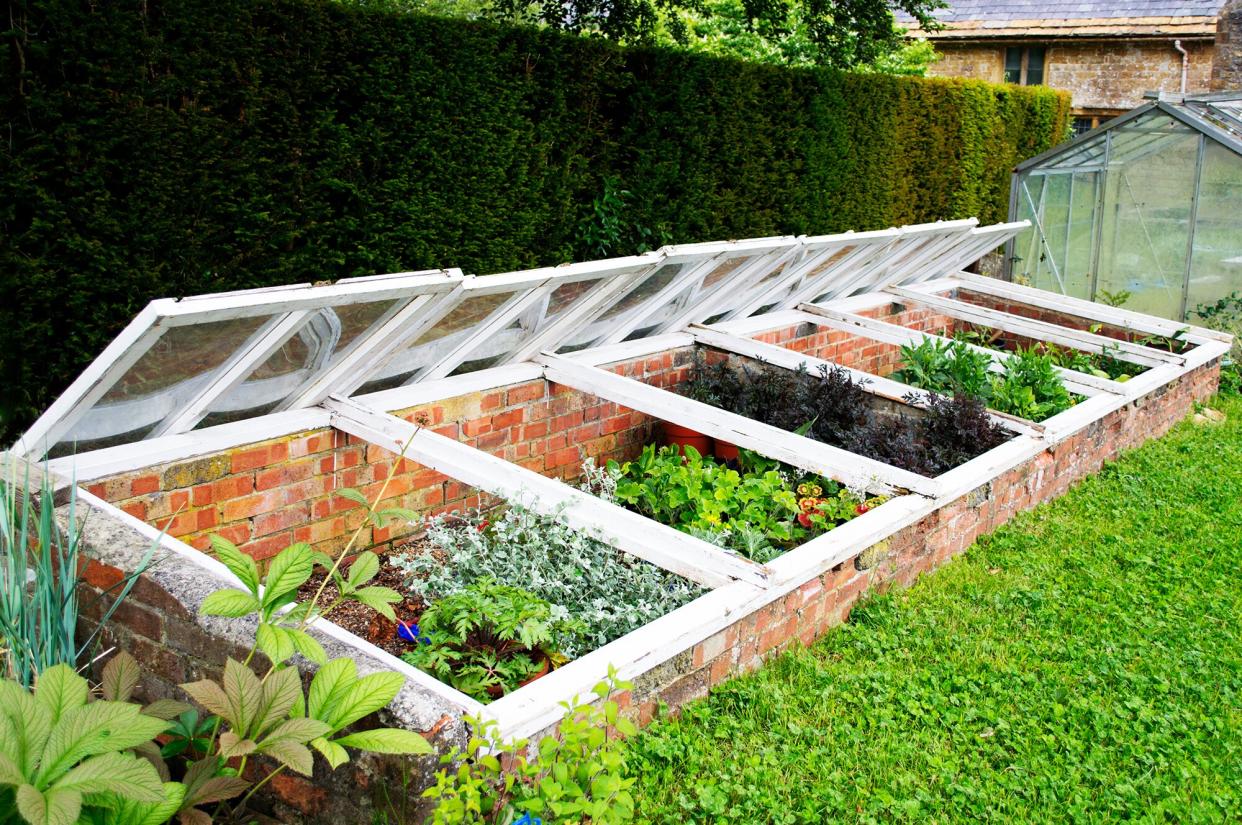Is Cold Frame Gardening Worth the Time and Expense? A Landscape Architect Weighs In

Getty Images
TABLE OF CONTENTS
On This Page
What Is a Cold Frame?
Are Cold Frames Worth the Investment?
Cold Frame Height Requirements
What to Plant in a Cold Frame
Gardening, our favorite horticultural pastime, comes with downright beautiful results—but the margin for error can feel razor thin at times. In addition to planting your species with access to the appropriate level of sunlight, you also need to put down roots at the right time of year.
But what if you could remove the timing element? Thanks to cold frames, you can (within reason). These season-extending, subterranean greenhouses require an upfront installation cost and regular maintenance—so does the extra hassle really pay off when it comes to a prolonged garden season? We asked a landscape architect to weigh in on this budding backyard trend.
Related: 15 of Our Favorite Raised Garden Beds
What Is a Cold Frame?
Defined as transparent structures with wood or masonry as well as a glass or transparent lid, cold frames were originally designed to harden off seedlings in a heated greenhouse. Today, however, they have become a genius way to extend your plants' growing season.
"You get to utilize the sun for warmth and provide a safe space for your plants to transition to the garden—or to shelter them from early frost," says Janice Parker, principal of her eponymous landscape architect firm. "Cold frames can also act as a barrier to keep certain pests off of tender new sprouts."
Are Cold Frames Worth the Investment?
While cold frames might be a great way to stretch your time in the garden, they aren't exactly foolproof—and they can result in a hefty building or installation fee. Parker also points out that the plants inside will only be a little bit warmer than the outside temperature, so you are limited in the kinds of crops you can grow. Plus, the level of commitment it takes to foster the contents of a cold frame isn't exactly for everyone.
"A gardener with limited time would likely find cold frames over-the-top—starting seedlings and small plants is not for the faint of heart or short of time," she says. "It's most widely adopted by serious gardeners [who are] focusing on agriculture."
Cold Frame Height Requirements
If you find that a cold frame is the right choice for you and your backyard's needs, you'll need to choose the right type. Fortunately, cold frames are available in multiple sizes, as well as pre-built options, kits, or full-on DIY setups. Regardless of which size and style you choose, you'll want to pay attention to its height.
"It can be the height that a gardener will want for the plants they are cultivating—higher to the back and sloping to the front," Parker explains. "The height can be 12 inches high, sloping down, or 6 to 7 inches high."
If you decide to DIY your cold frame, you'll be responsible for placing yours in the proper position. For best results, Parker recommends placing it in an east to west orientation as "north-facing cold frames may not get enough light to boost the season successfully."
What to Plant in a Cold Frame
Once you figure out the logistics, it's time to focus on the fun part. That's right: We're talking about which species to plant inside. Though Parker recommends frost-tolerant crops—such as spinach, winter pea, kale, and radish—there is plenty of room to get experimental.
"There is no guarantee in nature, except that you will learn and keep learning forever—which is a joy, not a con," Parker says. "Gardening should bring you joy, and more time to garden is more time to explore new plants, nature, and valuable lessons."

